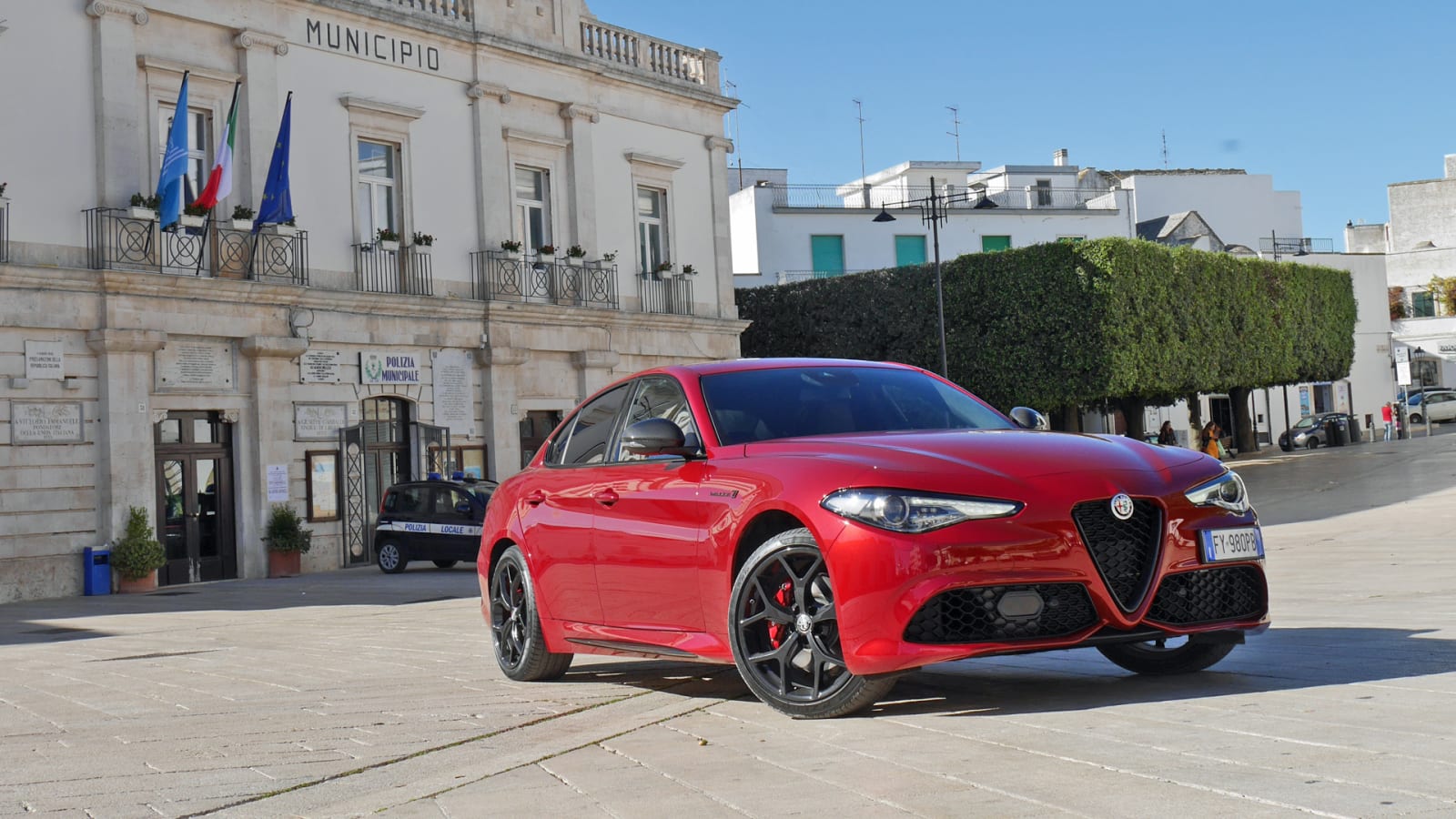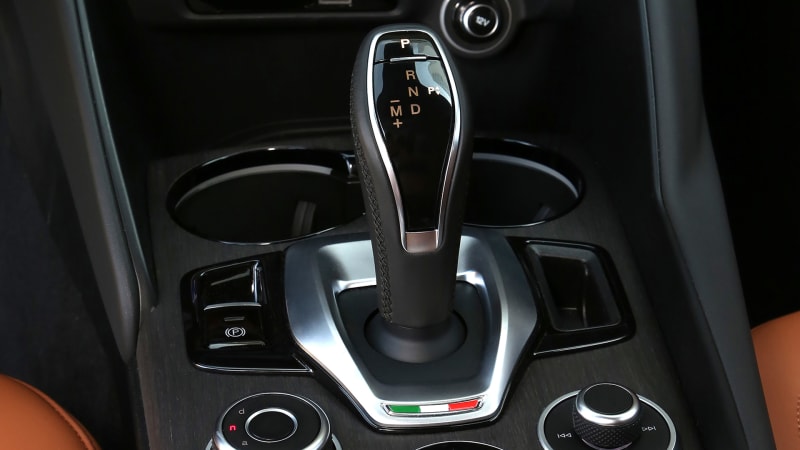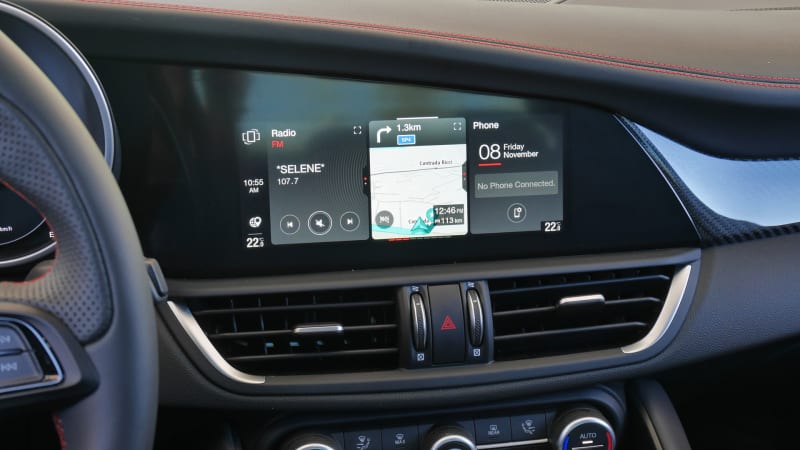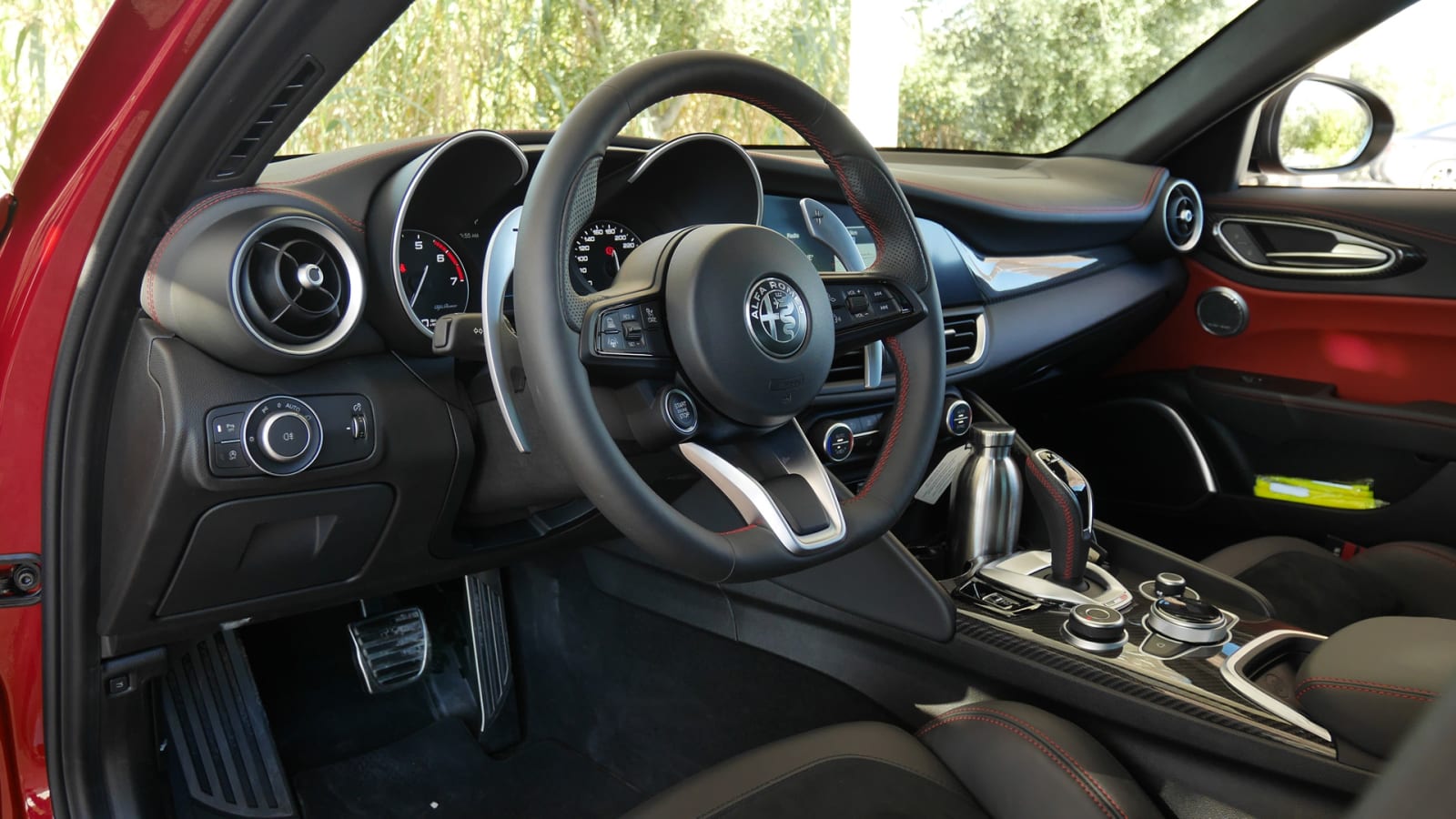2020 Alfa Romeo Giulia First Drive | All about the little things
https://ift.tt/2NZxq26
ALBEROBELLO, Italy – Little things can make a big difference. And for the 2020 Alfa Romeo Giulia, it’s the little things that have been addressed, those that have been causing reviewers to kvetch and customers to look elsewhere. The cupholders that cause bottles to bang into the HVAC controls. The shifter and knobs made of cheap plastic that wobble about in your hand. The backwoods entertainment system that makes an Audi’s look like it’s been beamed in from the far-flung future.
The big things? They’ve been left untouched, almost entirely for the best. The Giulia’s exceptional driving credentials have been well-documented with multiple awards and much gushing about divine steering and an astute chassis. For 2020, they’re unchanged apart from some imperceptible tweaks to the steering that iron out an occasional low-speed refinement issue. Even when driven on the regrettably non-winding roads of southern Italy’s “heel,” the Giulia continues to come across as something different and special. That steering is pleasingly quick and full of feeling, friendly to both those who yearn for man-machine connection and those who’d rather not get an upper body workout when parking at Kroger.
The Giulia feels light and playful, with a stiff chassis and adeptly tuned suspension. When people talk about sport sedans losing their edge (cough BMW 3 Series), it can still be found in the Giulia. At the same time, the adaptive dampers available in the Ti trim’s Performance package impressively sops up nasty bumps, of which there are a great many around Italy’s heel (AKA Puglia). Cars with such a sporting “edge” are often given a pass when it comes to ride quality, as a sore back and kidneys bruised by the seat bolsters are considered par for the course. The Giulia needs no such handicap.

If there’s a meh moment, it’s the engine. Much is rightly made about the Quadrifoglio’s 2.9-liter turbo V6 derived from Ferrari and possibly divine intervention. By contrast, the standard 2.0-liter turbocharged inline-four doesn’t offer much in the way of zest. Oh, its 280 horsepower and 306 pound-feet of torque are class-leading, and its 5.1-second estimated 0-60 time is exceptional. In sound, however, it’s just another turbo-four, and most disappointingly, its 5,500-rpm redline is a real buzzkill. It’s not exactly diesel-like, but it’s close. Noticed mostly when using the enormous paddle shifters seemingly sourced from a Klingon knife factory, the sound and feel of the engine make it seem like there’s still rev fun to be had, but then nope, you’re done, onto the next gear. It takes you by surprise. “Wait, that’s it?” You can pair this engine with a manual in Europe, and although we wouldn’t say no to the option, perhaps it wouldn’t make much of a difference.
Also unchanged is the design, for now, as Alfa Romeo will wait for the upcoming Tonale crossover to usher in a future brand-wide facelift (and Alfa says the final product has moved beyond what was leaked at a design clinic). There are some new colors available, including a premium white and the classy Verde Visconti shown in the photo gallery at the top of the page. The new rich red hue shown in the Giulia we drove, above, and the sexy new gold color you may see in European reviews won’t be coming to the United States, at least for now. Too bad.
Back to those little things, though, nearly all of which are inside. The steering wheel is new, but the button layout, including the distinctive starter, is the same. You probably won’t notice the difference. The center console, however, is a different story and gets the bulk of updates. The previously flimsy electronic shifter is a little more solid in action, it’s now covered in stitched perforated leather and surrounded by a metallic housing festooned with a little Italian flag. The electronic parking brake has been relocated to the left of it, while a fairly useless fob-sized bin is on the right. Forward of the shifter are cupholders moved rearward to prevent bottles from smacking into the HVAC controls (we tested it, mission accomplished), and although they no longer have a retractable cover, the trade-off is a new bin forward of the cupholders where you can store and charge a smartphone using the adjacent USB port. There are additional USB ports under the center armrest, plus a new wireless charging pad angled underneath the armrest lip that’s accessible whether the lid is open or closed. In general, a smart packaging rethink.
The three knobs on the center console get a much-welcome upgrade, too. They don’t wobble about as much, but also don’t have the solidity you’d find in an Audi, for instance. That’s OK, we can’t all be kings. At least they don’t make you go “yuck” anymore. The knobs for the “dna” drive mode selector and volume/track continue to be ringed by a textured rubber, but the infotainment system knob now has a knurled metal finish that looks and feels premium. The surrounding “menu” and “option” buttons are also new, featuring icons instead of letters.




A more important upgrade related to that infotainment knob, however, is that it’s now a redundant feature. Although Alfa Romeo kept it around because there are instances where it’s preferable or safer to use (scrolling through playlists or contacts, for instance), the system’s 8.8-inch display is now a touchscreen. The graphics and user interface are also new, as is a faster processor. Like other touchscreen systems, most similarly from Porsche, the home screen consists of three configurable tiles for various functions – radio, navigation and phone were set in our car. It’s not as functional as Porsche’s setup, however, as the three-tile layout is largely a more detailed home screen and generally requires you to dig deeper into one of those menus. Basically, the new system is less likely to be a deal breaker, but it won’t be making many deals, either.
Also on the tech front are new-and-improved accident avoidance features. Forward collision warning and automatic emergency are not only standard, but the system has been upgraded to full-speed-capable Bosch-sourced technology. A driver inattention monitor and steering assistance for the lane-departure and blind-spot systems are now available for the first time. We found the lane-keeping assist system would occasionally try to steer us back into our lane even when signaling a change, which isn’t great.
On the other hand, the optional, also-by-Bosch adaptive cruise control system is excellent. It gets on the brakes and accelerator at a natural time, works in stop-and-go traffic, looks further ahead than is set to anticipate the need to smoothly slow down, and just generally behaves like a good human driver. The accompanying steering assist also works well, smartly steering around highway corners and not ping-ponging between lane markers. It’s a first-class system.

The 2020 Giulia also gets standard app services, brought to you by Alfa’s corporate cousins at Mopar, including My Remote (allows you to remotely lock/unlock the car) and My Assistant (SOS calling and roadside assistance). Additional remote diagnostic tools will be added to the app suite in the second half of 2020.
Indeed, any of these little things by themselves would probably make you shrug and go, “Yeah, so?” But in total, they address primary reasons people were likely to buy something other than an Alfa Romeo Giulia. However, the Giulia’s primary pain point remains one that can’t be quantified by a brief drive in Italy or by detailing a list of welcome new features: Alfa Romeo’s terrible reliability reputation. From owner reports to multiple broken-down press cars, the Giulia has been infamously rife with issues. Perhaps more time on the market to iron out bugs will fix that, but more time is also what’s needed to know that answer – or perhaps reassuring potential customers with a warranty longer than the existing four-year coverage. Either way, it’s no longer the Giulia’s little things that Alfa Romeo must worry about. It’s that great big thing.
Auto Blog
via Autoblog https://ift.tt/1afPJWx
November 19, 2019 at 09:31AM